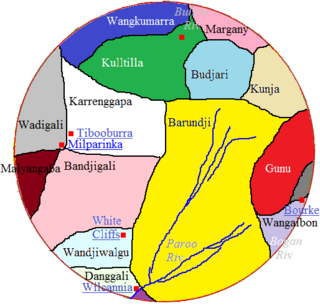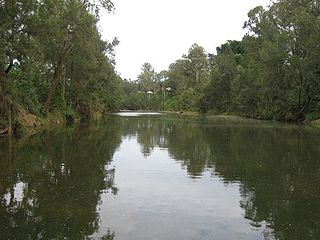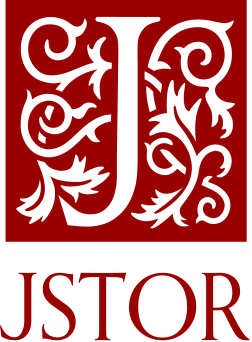This page is based on this
Wikipedia article Text is available under the
CC BY-SA 4.0 license; additional terms may apply.
Images, videos and audio are available under their respective licenses.
The Gidabal, also known as Kitabal and Githabul, are an indigenous Australian tribe of southern Queensland, who inhabited an area in south-east Queensland and north-east New South Wales, now within the Southern Downs, Tenterfield and Kyogle Local Government regions.

The Bundjalung people are Aboriginal Australians who are the original custodians of northern coastal area of New South Wales (Australia), located approximately 550 kilometres (340 mi) northeast of Sydney, an area that includes the Bundjalung National Park.
The Wandandian were an indigenous Australian people of the South Coast of New South Wales with connections to the Yuin and Tharawal nations.

The Kangulu, also written Gangulu, is an aboriginal tribe from the Mount Morgan area in Queensland, Australia.
The Erawirung. otherwise known as Yirau, were an Indigenous Australian people group whose traditional territory was located in what is today South Australia.

The Warkawarka, or as preferred by the community Weki Weki, are an Australian Aboriginal tribe whose traditional lands are located in Victoria, Australia.
The Wodiwodi peoples were the Indigenous Australian people of New South Wales.
The Ngintait, or Ngindadj, were an indigenous Australian people of the northwest corner of the state of Victoria, and partly in South Australia. 9 people, all of one family, claim descent from the tribe, which was dispersed in the 19th century.
The Wadjalang, also known as the Dharawala, were an indigenous Australian people of Queensland.

The Karenggapa are an indigenous people of New South Wales. They might have spoken a dialect of the Yarli language, but there is little data.
The Maikudunu were an indigenous Australian tribe of the state of Queensland.
The Mingin, also known as the Mingginda, were an indigenous Australian people of the state of Queensland, who lived in the Gulf Country east of Moonlight Creek and the Ganggalida people in the southern Gulf of Carpentaria. They are now thought to be extinct.
The Karingbal (Garaynbal) are an indigenous Australian people of the state of Queensland. They spoke a dialect of Biri.
The Kalibal (Gullibul) were an indigenous Australian people of New South Wales.
The Minyungbal, also written Minjungbal, are an indigenous Australian people of New South Wales who speak the Minyungbal language.
The Arakwal were an indigenous Australian people of the state of New South Wales.
The Kawambarai (Gawambaraay) were an indigenous Australian people of the state of New South Wales. Their domain was in the central–western district of New South Wales
The Wanjiwalku were an indigenous Australian people of the state of New South Wales.
The Paaruntyi are an indigenous Australian people of the state of New South Wales. They are not to be confused with the Parrintyi.
The Weraerai (Wirraayaraay) were an indigenous Australian people of the state of New South Wales. They are to be distinguished from the Ualarai.








